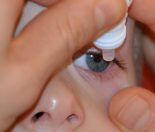Warts – or verrucas as they’re commonly known when found on feet – are a harmless skin growth common in children, characterised by rapid growth of the top layer of skin around the affected area. Find out all about how to get rid of warts.
What are the symptoms of warts?
Warts are an abnormal skin growth, caused by a virus, most commonly appearing on hands and feet.
There are five different types of warts — common; plantar; flat; filiform; and periungual — with each type looking different and appearing on different parts of the body. Children are most frequently affected by either common warts and/or plantar warts.
Common warts usually appear on the hands (but may appear elsewhere on the body, and inside the lip, mouth and nose); appear as rough (cauliflower like), grey/brown, dome shaped growths; and may appear either singly or in groups.
Plantar warts are a type of wart found on the bottom or sole of the foot and are also known as verrucas (or veruca or verruca). Plantar warts look like thick, hard patches of skin with small black dots or specks, and they are surrounded by the skin’s normal skin pattern. They can cause pain and discomfort on walking or when pressure is applied around them, and can easily spread, so it is important to treat your children early and ensure that you get rid of veruccas completely.
What causes warts?
Warts are caused by a virus called human papillomavirus (HPV). Like many viruses, warts are highly contagious, making it imperative to treat children’s warts early. Children are susceptible to warts as their immune systems are still developing and consequently may not recognise or fight the wart virus.
What causes warts in kids?
The wart virus is contracted by direct contact with the skin, usually entering the body through an area of broken skin.
The virus can survive without a host for a long time, then enters the skin through tiny cuts or abrasions on the surface and, after approximately 2 to 9 months growth beneath the skin, the wart appears.
The wart virus thrives in a moist, warm environment. Warts on the feet are contracted from wet surfaces that children often walk on – around swimming pools, public shower areas, and public changing room floors are common examples. Warts can also be spread by the sharing of personal items, such as towels and razors, or by touching a wart and then another part of the body or another person.
What do warts look like?
This short video from Dr Ig Nobel gives a good overview of what warts look like, with a number of different looking warts, and on different parts of the body:
https://www.youtube.com/watch?v=t5BfUml8s90
Video courtesy: Dr Ig Nobel
How to get rid of warts in kids?
There are many different types of treatment for warts and the advice given to you will depend upon how bad your children’s warts are, whether the warts are causing problems, and the perceived success of various treatments.
Most commonly, parents treat warts with over-the-counter products and apply these at home. Common home therapies include –
1 The dissolve and file method
The application of chemicals — most commonly salicylic acid — to dissolve the protein which makes up most of the wart and the thick layer of dead skin atop the wart; and then filing the verruca with an emery board or pumice stone. If the wart is stubborn then it may take several weeks or months to get rid of the warts completely.
2 The freezing method
Freezing agents, similar to the liquid nitrogen used by health professionals, are also available without prescription from pharmaceutical stores. For some warts a single dose may be sufficient, for stubborn warts it may take longer.
3 The home treatment method
It is increasingly possible to treat warts (including verrucas) at home.
It is advisable to seek professional advice if you’re concerned about whether the problem is definitely caused by warts, or if you have problems getting rid of the warts on your own. Dermatologists, or podiatrists have a number of other treatment methods.
4 Other treatments can include
• Laser treatment
• Surgical excision
• Cauterisation of the warts
• Chemical treatments
• Application of chemotherapy agents
• Liquid nitrogen freezing method.
How to prevent catching warts
Prevention is of course the preferred option, as warts are easily picked up by children and teenagers, who have not yet built up immunity.
Verruca socks may be worn; jandals can be left by the pool and popped on as soon as kids are out of the pool; and jandals again when in public showers and changing rooms.
Take care of those hands and feet (and anywhere else on their bodies), and treat problems as soon as possible!
Now that you know treating and preventing warts, you may want to know about 6 common contagious infections kids get from school. Or, for more expert health advice check out Health and wellbeing section.







Please help. My son has some verrucas on his foot. We treated them with many over the counter products over the course of a year, but none had any effect. We took him to a podiatrist who scratched and prodded and treated with black/dark liquid over several weeks. He was referred to a surgeon in the city as the treatment was deemed ineffective. We paid $600 to have the verrucas cut out. They grew back within 6 weeks. We started treatment again as he didn’t want them cut out again due to the pain, but again, no good. We took… Read more »
Hi Liz,
Sounds like you’ve been having a tough time! As I’m sure you’re aware, warts and verruccas are a virus and can be related to an underlying immunity issue. If you’ve not had any luck with conventional medicine, you may like to consider trying a naturopath or other kind of practitioner.
Good luck with this!
Rochelle